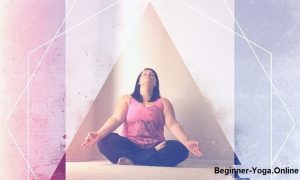No time to read this? Click here to receive this post as a PDF

A good low-impact way to stretch and strengthen back muscles is yoga. There are several types of yoga, some of which are much better suited for those with chronic conditions.
4 beginner yoga poses
Here are 4 beginner yoga poses to try. It is important to start slow and easy, and as with any exercise, always check with your doctor first.
- Mountain Pose. This is a great pose for beginning your yoga practice. It helps with balance and core strength, and it is a beginning pose which requires you to stand tall and steady, like a mountain.
- Stand with your big toes touching and your heels slightly separated. Relax your shoulders and allow your arms to hang, relaxed, by your sides.
- Close your eyes, and envision yourself firmly planted in the ground, concentrating on your feet.
- Lift up on to the balls of your feet, and then your toes, distributing the weight evenly across your feet.
- Settle back down flat and find your balance. Fan out your toes.
- Engage your thigh muscles, but do not lock your knees.
- Lift your pelvic bone slightly toward your navel. Keep your chin parallel to the floor and relax your shoulders. Let your arms hang naturally.
- Relax your facial muscles and take slow, fluid breaths.
- Shift your weight to your left foot, and continue with the tree pose.
Practicing yoga is a great way to strengthen the muscles that support the spine.
Watch: Lower Back Strain Video
- Tree Pose. Another standing pose, tree pose helps with posture, strengthening your core, and improving your overall balance. It is also helpful with stress reduction.
- After mountain pose, shift your weight to your left foot.
- With your right hand, reach down and grab your right ankle. Lift your right foot up and place the sole of your foot against your left thigh. If you can’t reach up to your thigh, try putting your foot against your calf instead.
- Stretch and lengthen your spine. Draw the pelvic bone inward and point your tailbone toward the floor.
- Place your palms together in front of your chest and move your shoulder blades together.
- Gaze forward and take slow and steady breaths. Repeat on the other side.
- Cat/Cow Pose. This pose opens up the spaces between your vertebrae and stretches the muscles and tendons that support your spine.
- Kneel with your hands below your shoulders and your knees below your hips (also known as table top pose).
- Look down towards your yoga mat and spread the fingers. Engage your abdominal muscles.
- As you inhale, lift your head and tailbone, making your lower back concave.
- As you exhale, tuck your tailbone release your neck, and drop your head while rounding your back.
- Child’s Pose. This is an incredibly relaxing pose for everyone and is best to do after cat/cow pose.
- Begin seated on your heels.
- Stretch the arms and hands out in front of you.
- Bend your upper body forward and lower your chest close to your knees.
- Continue to stretch your arms forward. Breathe deeply and relax as you feel your back and spine muscles lengthening.
- Relax your entire body.
If you try these poses and like them, seek guidance from an experienced yoga instructor to learn more. If you’re considering signing up for a yoga class, look for an instructor who is experienced in working with someone with spinal conditions.
A yoga instructor can also help with modifications of different poses if needed. Once you are comfortable moving through different poses, you will be able to take some time anywhere to stretch and relax.
Learn more:
https://www.spine-health.com/blog/top-4-beginning-yoga-poses-scoliosis-sufferers
On – By Carrie DeVries




